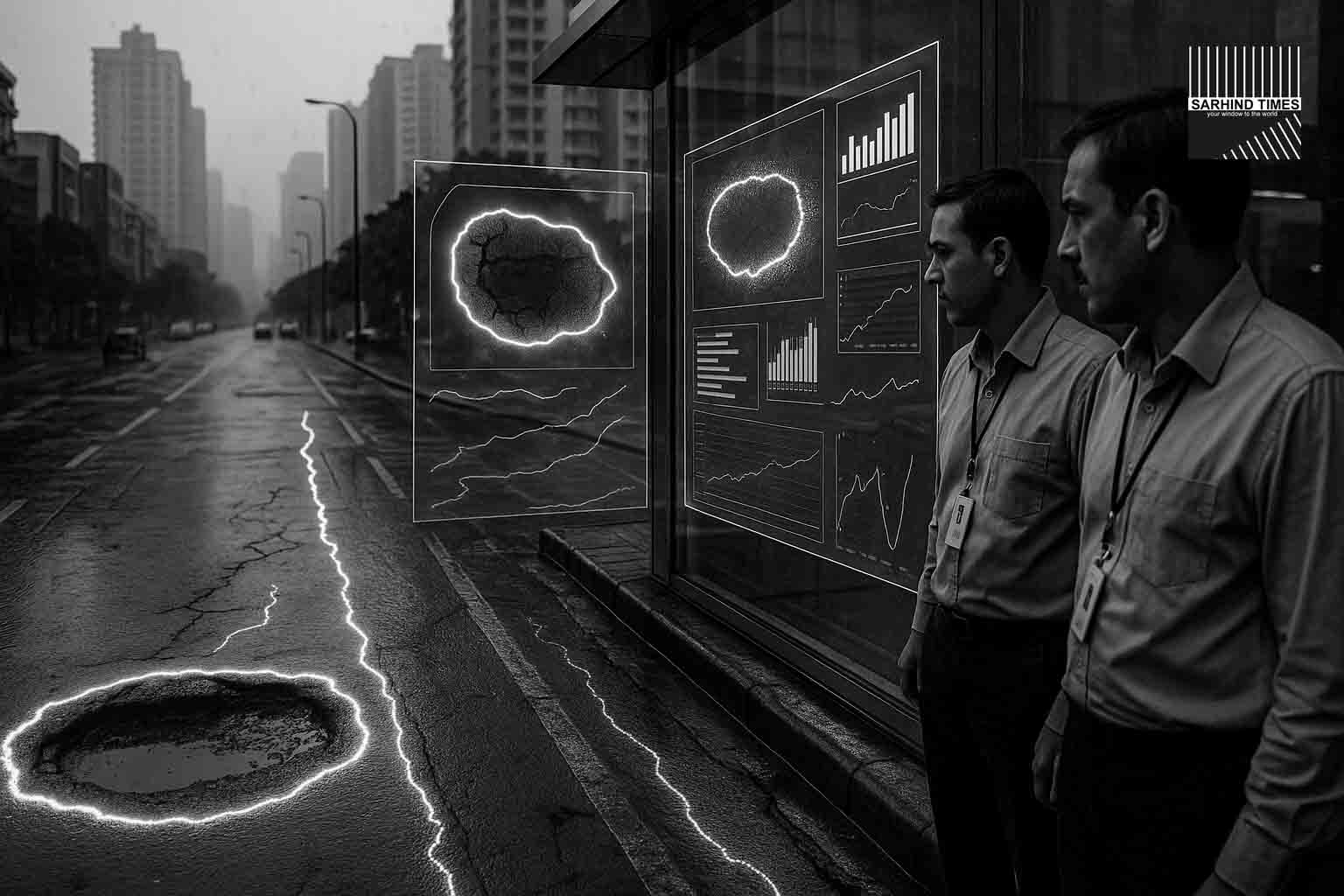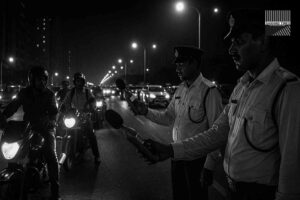21 Sep 2025
Every monsoon in Gurgaon tells a familiar story: potholes bloom across arterial roads, water stagnates in underpasses, and frustrated commuters navigate cracked pavements and chaotic traffic bottlenecks. This year, however, the Municipal Corporation of Gurgaon (MCG) and the Manesar civic body are trying something new. Instead of relying solely on manual inspections, they are turning to artificial intelligence (AI) to map and monitor civic defects in real time.
The pilot, slated for rollout across industrial and residential belts with high vehicle density, promises to transform how Indian cities approach urban maintenance. From pothole detection to encroachment audits, the AI-backed pipeline aims to spot defects faster, assign them to engineers with service-level agreements (SLAs), and ensure transparent before-and-after reporting.
But how realistic is this promise? And what does it mean for citizens, policymakers, and technology providers? Sarhind Times dives deep into the initiative, unpacking its potential, pitfalls, and broader context in India’s urban governance landscape.
Gurgaon’s Long Struggle with Potholes
- Gurgaon, despite being India’s IT and corporate hub, has faced persistent road-quality issues.
- Monsoon 2025 was particularly harsh, with 30% above-normal rainfall (≈623 mm), leaving large sections of the city scarred.
- Residents routinely highlight problems on social media, tagging MCG and GMDA (Gurgaon Metropolitan Development Authority).
Historically, repairs have relied on:
- Manual surveys — where engineers physically map defects.
- Citizen complaint portals — often flooded with grievances but slow to trigger responses.
- Periodic audits — done quarterly, leaving gaps in between.
This reactive approach has meant delays, duplication of work, and rising accident risks.
Enter AI: How the System Works
Officials explain that the system functions as a computer-vision pipeline:
- Data Capture: Dash-cams mounted on municipal vehicles, drones, and field surveys collect imagery.
- AI Detection: Trained models flag potholes, broken medians, and encroachments (e.g., shops spilling onto walkways).
- Task Allocation: Detections are converted into digital tickets assigned to ward engineers, with time-bound SLAs.
- Resolution Audits: Engineers upload “before” and “after” photos. AI cross-verifies completion.
- Reporting: Monthly dashboards track performance, showing which zones are fastest or slowest to respond.
Potential Benefits
- Faster Response: Automated detection can cut down the lag between damage and repair.
- Transparency: With photo and geo-tag data, excuses of “no complaint received” vanish.
- Cost Efficiency: Reduced need for manual surveys lowers overheads.
- Road Safety: Timely repairs can prevent accidents and reduce vehicle damage costs.
- Urban Planning Data: Longitudinal defect data can inform which roads need structural upgrades, not just patchwork.
Global Inspiration
Cities worldwide are experimenting with AI in civic maintenance:
- Boston, USA uses “Street Bump” — a smartphone app detecting potholes via accelerometers.
- Amsterdam, Netherlands runs AI-based encroachment audits for sidewalks.
- Singapore integrates AI into traffic cameras for lane-marking inspections.
Gurgaon’s project is significant because it aims for city-scale deployment, not just pilot trials.
Challenges & Concerns
However, experts caution that technology is not a silver bullet:
- Data Quality: AI requires high-resolution, consistent imagery. Dust, rain, or glare can lower accuracy.
- Institutional Buy-in: Engineers may resist a system that introduces accountability dashboards.
- Repair Quality: Detecting potholes is only step one; quality of repair remains human-dependent.
- Budgetary Gaps: Scaling the system requires hardware, software, and training investments.
- Privacy Questions: Street-level imagery must anonymize faces, number plates, and storefronts.
Civic Voices
- Residents: “We are hopeful, but unless fines and accountability are enforced, repairs will still be patchy.”
- Commuters: “AI may speed things up, but road contractors must be monitored too.”
- Planners: “If defect data can be publicly mapped, it can revolutionize citizen engagement.”
Governance Synergy
The MCG is coordinating with GMDA to avoid jurisdictional overlaps. This is crucial: over 40% of Gurgaon’s roads fall under multiple agencies, leading to confusion over who must fix what.
The AI system’s integrated dashboard could help resolve this tug-of-war by providing unified data, ensuring no agency can shirk responsibility.
Wider Implications for India
If successful, Gurgaon could become a template for AI-driven civic maintenance across India:
- Mumbai could map potholes along monsoon-prone highways.
- Bengaluru could audit footpath encroachments.
- Tier-2 cities could deploy drones to survey growing peri-urban belts.
Urbanists argue that as India urbanizes (with 600 million urban residents projected by 2036), such tech adoption is no longer optional.
Expert Viewpoints
- Urban Tech Expert: “AI must be seen as an assistant, not a replacement. It provides visibility but needs strong governance follow-through.”
- Economist: “The hidden savings on vehicle wear and healthcare from reduced accidents can be massive.”
- Sociologist: “Transparency dashboards could empower citizens — if made public and easy to understand.”
Looking Ahead
Initial rollout will cover:
- Industrial belts: Manesar, Udyog Vihar.
- Residential zones: Sohna Road, Golf Course Extension Road.
Officials plan to review after six months before scaling citywide.
The bigger question: Will AI fix potholes, or simply create new dashboards?
The answer depends on whether civic culture shifts from reactive firefighting to proactive, data-driven governance.
Conclusion
The move marks a paradigm shift in urban governance—from anecdotal complaints to algorithmic monitoring. Gurgaon’s experiment could set a precedent for India’s smart-city ambitions, blending technology with accountability.
For now, commuters will watch closely: will the next pothole they hit be logged by AI—or ignored by bureaucracy?
#Gurgaon #UrbanTech #AI #RoadSafety #SmartCity #Infra #CivicTech #UrbanDevelopment #DigitalIndia






















+ There are no comments
Add yours